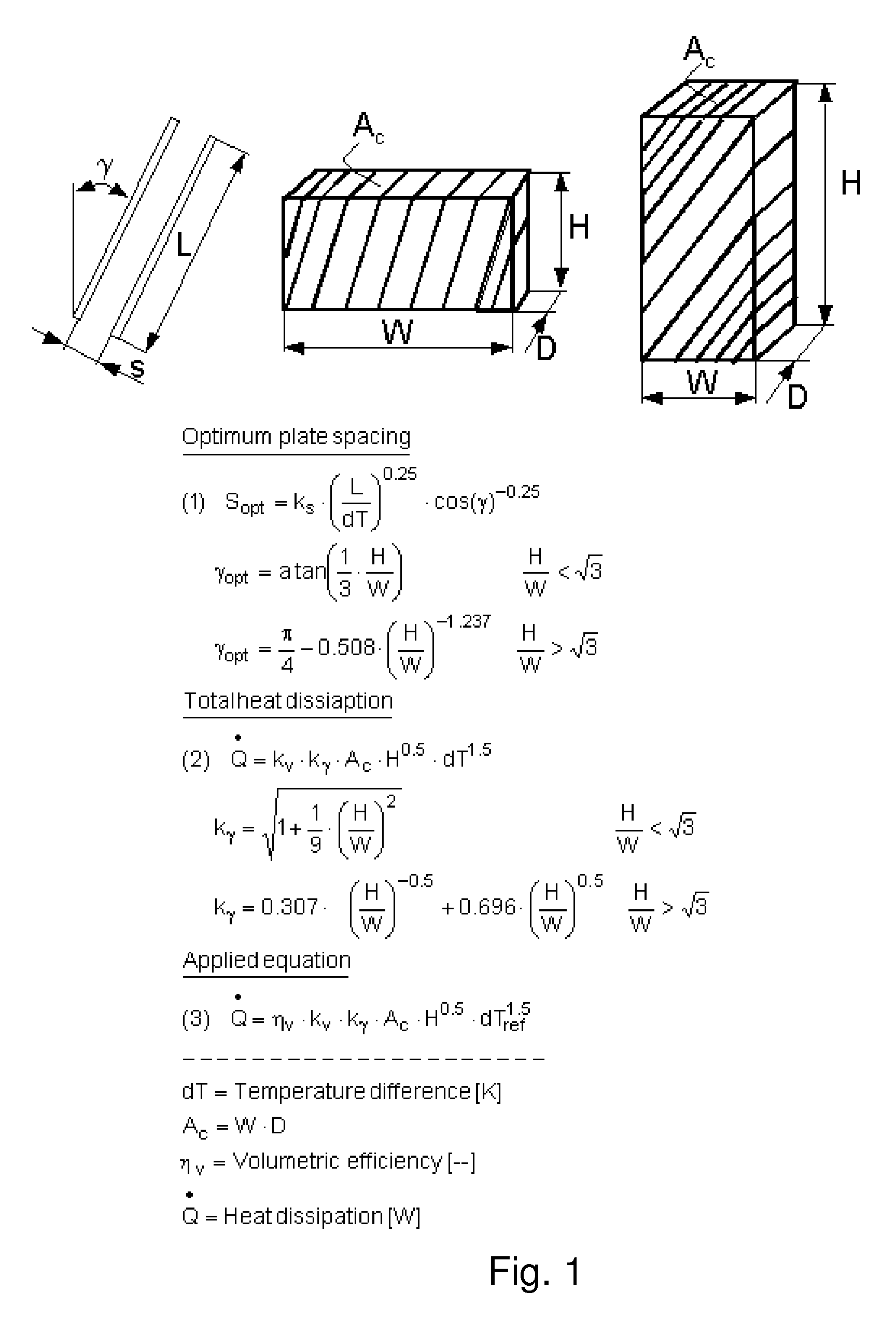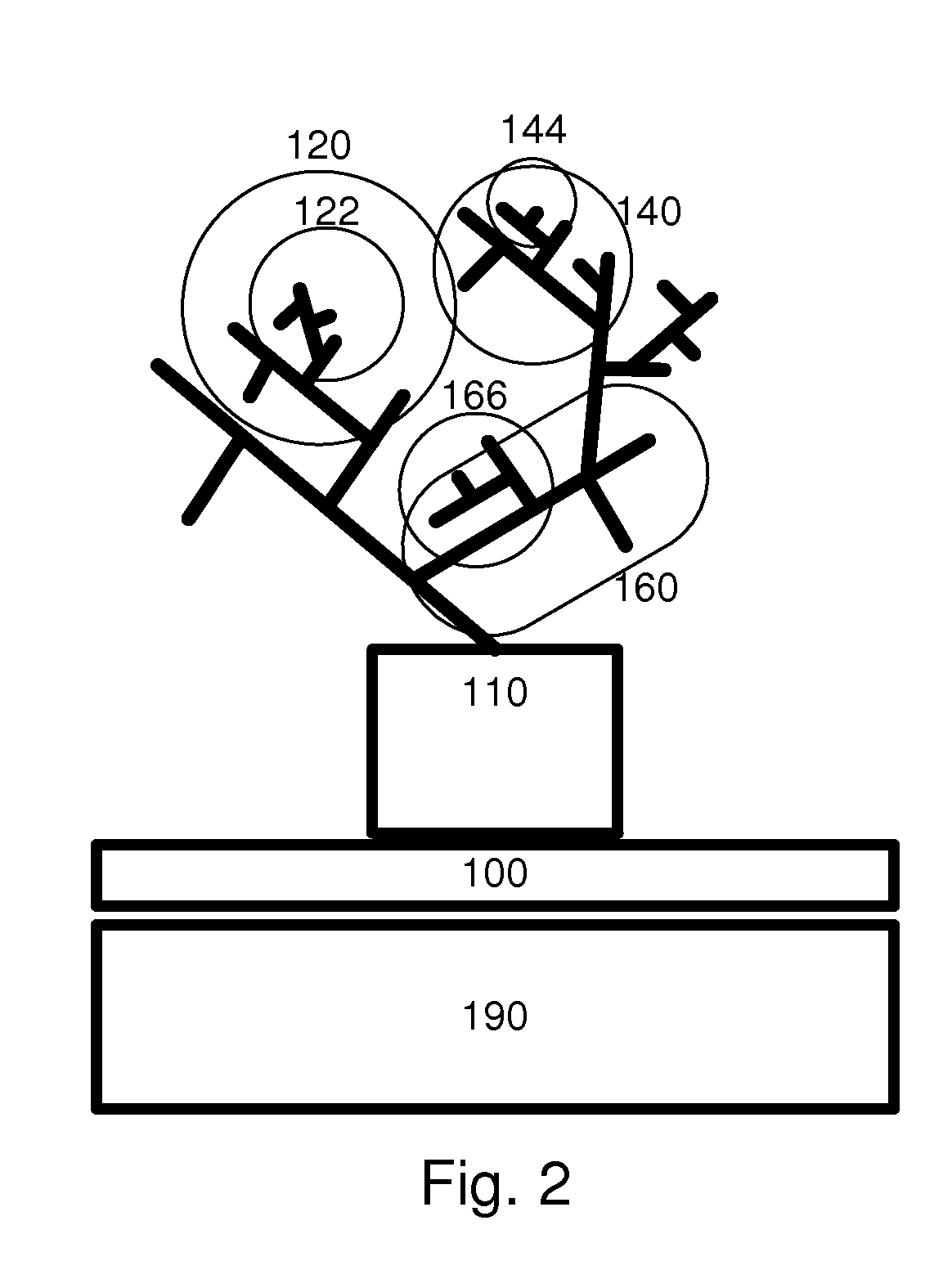Fractal heat transfer device
a heat transfer device and fractal technology, applied in the field of heatsinks or items, can solve the problems of affecting the performance of heatsinks, and affecting the production efficiency of heatsinks, so as to reduce the narrow band acoustic resonance, reduce the energy loss, and improve the efficiency of heat transfer
- Summary
- Abstract
- Description
- Claims
- Application Information
AI Technical Summary
Benefits of technology
Problems solved by technology
Method used
Image
Examples
Embodiment Construction
[0081]FIG. 2 illustrates a heatsink implementing an exemplary embodiment of this invention. Note that the illustration is in two dimensions, but a three dimensional embodiment is both possible and preferred. There is a heat transfer surface 100 that allows the heatsink to rest comfortably on a surface, such as the solid to be cooled 190. In the illustrated embodiment, the heat transfer surface 100 is roughly planar, having a closed Euclidian cross-section on the bottom. However, it might also have another shape, for example if the solid to be cooled does not have a planar face. A fractal-shaped heat exchange device begins at point 110. While only one fractal heatsink is illustrated here, skilled persons in the art will recognize other similar fractal heatsinks that are also intended to be covered by the invention. Note that the heatsink has three branches leaving from point 110—branch 120, branch 140, and branch 160. Also note that the branch structure initiating from point 110 is n...
PUM
 Login to View More
Login to View More Abstract
Description
Claims
Application Information
 Login to View More
Login to View More - R&D
- Intellectual Property
- Life Sciences
- Materials
- Tech Scout
- Unparalleled Data Quality
- Higher Quality Content
- 60% Fewer Hallucinations
Browse by: Latest US Patents, China's latest patents, Technical Efficacy Thesaurus, Application Domain, Technology Topic, Popular Technical Reports.
© 2025 PatSnap. All rights reserved.Legal|Privacy policy|Modern Slavery Act Transparency Statement|Sitemap|About US| Contact US: help@patsnap.com



